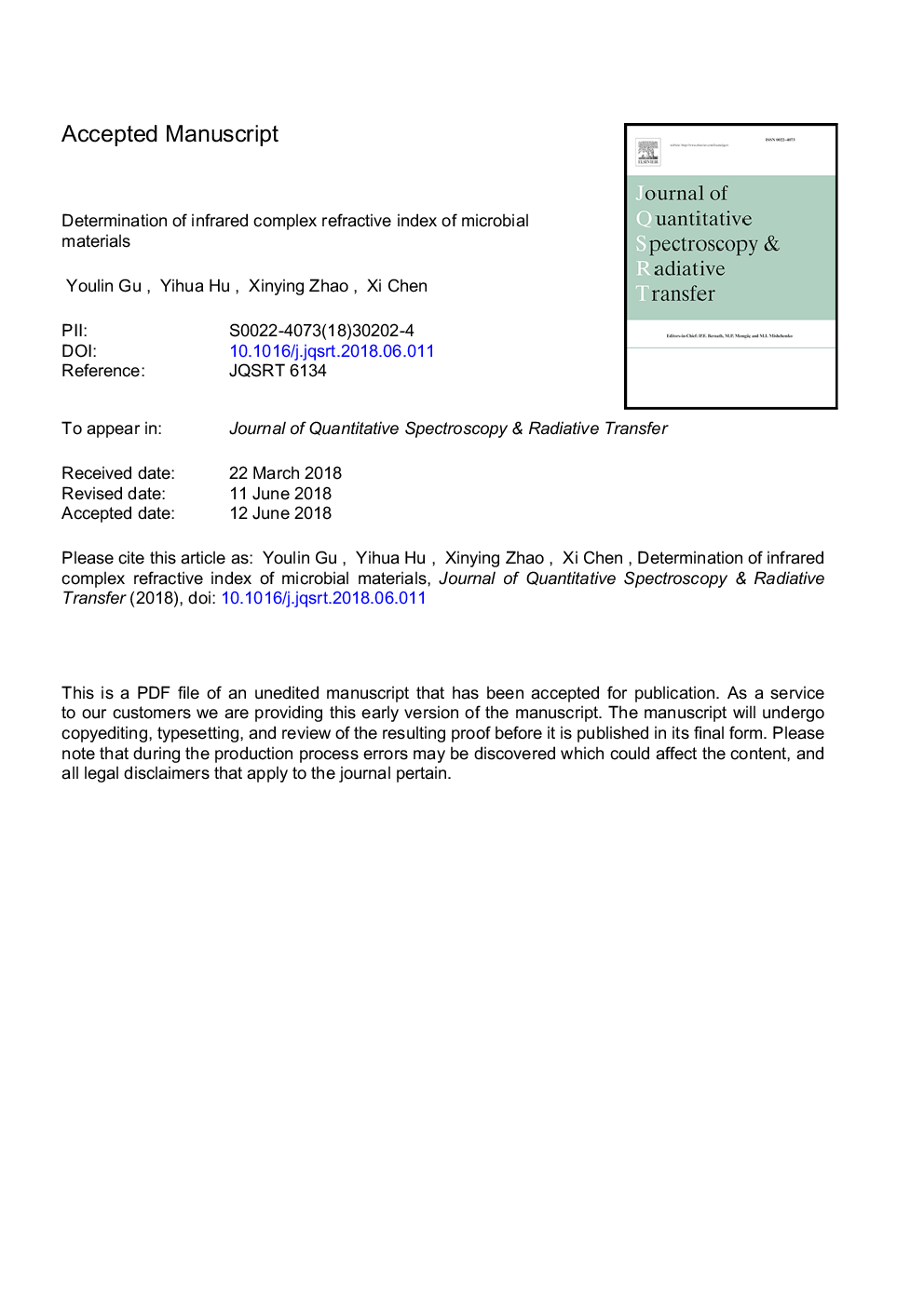| Article ID | Journal | Published Year | Pages | File Type |
|---|---|---|---|---|
| 7845881 | Journal of Quantitative Spectroscopy and Radiative Transfer | 2018 | 19 Pages |
Abstract
Microbial material is an important part of bioaerosols, and its complex refractive index (CRI) is a vital parameter for study on optical characteristics and detection, identification of microbes. The reflection spectra of microbial materials within the 2.5 â¼ 15â¯Âµm were measured by using squash method and a Nicolet FT-IR spectrometer. The CRI of microbial material was retrieved by using Kramers-Kronig (KK) transform and an iterative method on the basis of different reflection spectral extrapolation methods in the infrared. The real part n is constrained between 1.20 and 1.60 with no obvious variation rule in wavelength (λ), type of microbes, and extrapolation methods. Imaginary part k has a value of 0.00 â¼ 0.30. Exponential extrapolation method was used to expand the reflection spectra in the higher frequencies in order to retrieve the CRI and to solve the problems about negative values of imaginary part of CRI caused by constant extrapolation method. Influences of incident angle and different reflectance are discussed. Oblique incidence has little influence on the reflectance measurements, difference of reflectance between normal incident light and oblique incident light is 10â¯ââ¯4 orders of magnitude. Different exponential coefficients have a very small impact on CRI, which has 10â¯ââ¯3 orders of magnitude. Results show that an iterative method is a practicable way to find appropriate coefficients of reflection spectral extrapolation, and the CRIs are presented and can be applied in the electromagnetic attenuation field of microbial materials and so on.
Related Topics
Physical Sciences and Engineering
Chemistry
Spectroscopy
Authors
Gu Youlin, Hu Yihua, Zhao Xinying, Chen Xi,
